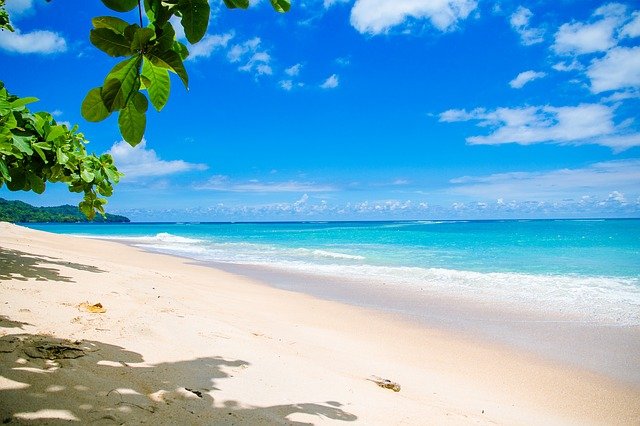Why is Florida Sand White?
Florida is renowned for its stunning white sandy beaches, attracting visitors from near and far. The pristine coastline and soft, powdery sand create a picturesque paradise for beachgoers. But have you ever wondered why Florida sand is so remarkably white? Let’s delve into the science behind this natural phenomenon.
The Composition of Florida Sand
Florida’s white sand owes its hue to its unique composition. The primary component of this sand is quartz, a mineral found abundantly in the Earth’s crust. Quartz is composed of silicon dioxide (SiO2) crystals, which are incredibly hard and resistant to erosion.
Origins of the White Sand
The journey of Florida’s white sand began millions of years ago. It originated in the Appalachian Mountains, where weathering and erosion gradually broke down rocks and minerals into tiny particles. These particles were then carried by rivers and streams, eventually reaching the Gulf of Mexico.
Over time, the powerful currents and tides of the Gulf of Mexico transported these quartz-rich sediments to the coast of Florida. The constant motion of the waves acted as a natural sand-making machine, polishing and refining the quartz particles into the fine, white sand we admire today.
The Role of Coral and Shells
Another factor contributing to the whiteness of Florida sand is the presence of coral and seashells. The Sunshine State’s coastal waters are teeming with diverse marine life, including corals and mollusks. These organisms extract calcium carbonate from the seawater to build their protective structures, such as shells and coral reefs.
As these marine creatures thrive and eventually perish, their calcium carbonate remains on the ocean floor. Over time, wave action and storms break down these remnants, mixing them with the quartz sand. The addition of calcium carbonate particles further enhances the bright white color of Florida’s beaches.
Sunlight and Reflection
The color of sand is not solely determined by its composition. Sunlight plays a crucial role in how we perceive its hue. When sunlight hits the surface of the sand, it undergoes a process called scattering. The tiny particles of sand scatter light in all directions, with shorter wavelengths (such as blue and green) being more effectively scattered than longer wavelengths (such as red and yellow).
This scattering phenomenon causes our eyes to perceive the sand as predominantly white. As a result, Florida’s sand appears brilliantly white under the abundant sunshine that graces the state.
Preservation and Conservation
The pristine white sand beaches of Florida are treasured natural resources. To preserve and protect these valuable coastal ecosystems, it is important to practice responsible tourism and environmental stewardship. Visitors are encouraged to follow beach guidelines, dispose of waste properly, and avoid damaging fragile dune systems.
By appreciating and respecting the natural beauty of Florida’s white sand beaches, we can ensure their preservation for future generations to enjoy.
Many people flock to our town to check out one thing: the beautiful beaches. One of the best reasons for living in Pensacola is the fact that we live right on the coast of the Gulf of Mexico. The beautiful waters of the Emerald Coast – our little bit of coast that stretches from Pensacola to Panama City – and the gorgeous white, sandy beaches that surround it. Aside from the beauty of the beaches and Instagram-worthy posts that can come from it – do you know why our beaches have white sand?
The stunning, white, almost glittery sand is the actually made up of tiny bits of quartz. The quartz came from the Appalachian Mountains thousands of years ago. It was from the rocks in the Appalachian Mountains that eroded. Most minerals were ground to dust, but quartz, being resilient, didn’t. So, the deposits that were brought down to the Gulf of Mexico were pretty much pure quartz. And, unlike other areas, the rivers that were providing our sand stopped bringing new deposits for years.
While some believe that the water is the color is it because of the concentration of blue-green algae, it actually has a second reason. The blue-green color is caused by the light that shines on the water. How is the sand tied into this? The sunshine is reflecting off the shimmering quartz sand underneath the water. The combination of the blinding white sands and the crystal clarity of the water is what creates the gem-like quality. The water even goes through all the different hues that resemble green gems. Over time, the rivers that drained into the gulf became less and less. Thus, the Emerald Coast kept its hue.
Florida’s white sand is a product of geological processes spanning millions of years. The combination of quartz, the influence of marine life, and the scattering of sunlight contribute to the mesmerizing white beaches that make Florida a beach lover’s paradise. So, next time you sink your toes into the soft, powdery sand, take a moment to marvel at the geological wonders that have created this coastal gem.



